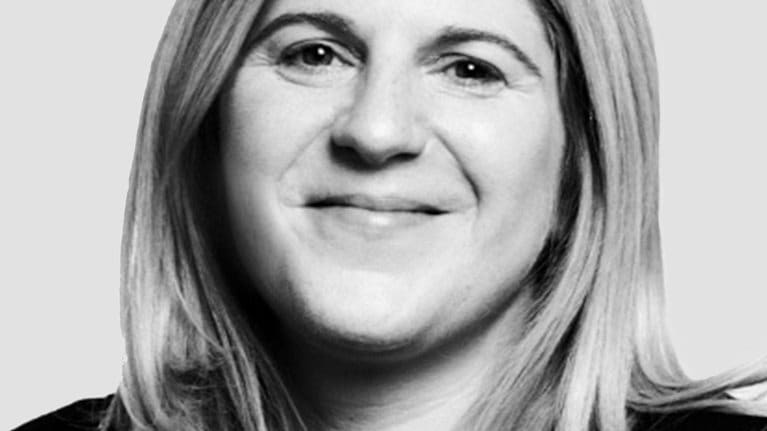It’s no secret that the world is awash in information. But how do you take the terabytes of data at your fingertips, extract what you need, and make the right decisions? In this interview, Jim Smith, president and chief executive officer of Thomson Reuters, explains to McKinsey’s Rik Kirkland how the company is seeking not only to remain competitive but also to grow by hiring and developing the right talent to meet its customers’ ever-rising expectations. An edited transcript of Smith’s comments follows.
Interview transcript
Evolving growth opportunities
Our opportunities have shifted a bit. We spent a lot of time trying to build out in markets where we thought we had the best chance to compete and the best chance to win. So we did a good bit of portfolio reshuffling over the last several years. We feel comfortable with where those markets are now, and we’re focused on how we exploit that growth. Writ large, the way we view our opportunities are those that lie right at the intersection of regulation and commerce. We see enormous opportunities there. When you take a look at the breadth and depth of content sets that we have, of offerings that we have, and the geographic reach that we have, I think it’s really unrivaled. The trick for us is how we knit those solutions together to serve our global customers.
If you think about what we do uniquely, we connect the global economy. And we serve both established multinational players—who are looking to continue to grow their business around the globe—and new regional emerging players, who are looking to connect with the broader global economy. I think you see a lot more emphasis from us, just as you are for a lot of other companies, to responding to the needs of these new emerging players in the new regional hubs that are really stepping in and driving a lot of the global growth that used to be driven kind in one direction.
Today, we cover more than 500 regulatory agencies around the world. And we update all the changes that they make, each and every single day. But we also have built workflow tools that tie not only to an announcement of, “This particular regulator has changed this rule,” but will tell you how that affects specific policies inside your business, what you need to do in order to change those practices, and what you need to do to be sure that you comply.
Innovation as a constant
“Innovation” is one of those incredibly overused words, and it often becomes kind of a theme-of-the-day. We obviously have to talk about it inside the organization. In order for us to be successful, though, innovation can’t be a project. It can’t be a program. It can’t be this year’s thematic exercise, and all of the retreats revolve around it and the posters look nice. Innovation’s about really being focused on customers and about constantly driving toward organic growth.
So what we’re trying to look at this year is a far more granular approach to growth and to thinking about what types of innovation will be required in order to get us in a position where we can be driving growth—year in and year out—just by the way we go through our paces of doing business day to day. It’s not enough to say, “This is our growth initiative,” or, “This is our innovation initiative.” You really have to get growth wired into the fabric of the way you talk about customers and the way you talk about the challenges inside the organization.
Some of it is through process. It can be a process that helps you take costs out in a new and clever way. It can be a new way of doing customer service that unlocks a whole new level of relationships. Or it can be everyone thinks about products, and it can be new products.
One way technology is really impacting our business and our customers is that, increasingly, our professional customers are bringing their consumer expectations into the workplace. The experiences that they have—whether they be from gaming or whether they be from iOS or Android devices in their personal life—they’re looking for immediate answers. And they’re looking for a very slick, touch-and-feel user interface.
That challenges an organization like ours that’s grown through the green-screen days and is very focused on getting the information exactly right—the way some consumer folks have learned—and not so much on the end-user experience. So that’s a bit of a challenge for us. And we’re out hiring some talent to bring that kind of DNA into our company.
It’s more design thinking. It’s more about the context. For us, it’s about making information immediately useful. That’s really important. And when I think about the future, I have whole categories of places where I’m confident we have the best information.
I don’t worry about being obviated by someone who’s going to come out and do the information a bit better. I worry about people who can take good-enough information and make it more useful, because they’re delivering it in more relevant ways.
I think that we’ve done a very good job—amongst the old-information publishers—of adopting technology early. But what we did is we took the library onto the desktop. And people went to the desktop and they did research. The current phase we’re going through is taking that desktop and putting it in the hands of the professional.
So it’s not about providing the best information utility. It’s about providing the right kind of tool—for a practicing lawyer, for a trader who’s not at his or her desk. Everybody needs to be thinking about that. Everybody needs to be thinking about how they can better serve their customers. Not just, “How can I sell a little bit more of a product that’s been really good for me for the past 10, 20, 30 years?”
Cultivating leaders
Where are the future leaders coming from? What’s that pipeline look like? What’s the current bench? What’s my team look like today? And are we up to the challenge? Not only is it are we individually up to the challenge; are we functioning as a team? Are we being open and honest with each other and constructive? We’ve done a lot of work around shared purpose, around values, and about the behaviors that we have to exhibit if we’re going to live those values. And I know that sounds like soft stuff. But I think it’s absolutely critical, particularly in this day and age when you need to move quickly.
It isn’t about, you know, precisely describing the geographic boundaries of command and control. It’s about creating a team that’s capable of morphing and changing as opportunities arise, and redirecting throughout the year as opportunities arise. I worry about that a lot. And we spend more time on purpose, values, and culture with the top now 2,000 people in the organization than we ever have in the past.
I spend a lot more time working on that long-term-succession-planning chart that we have. And it’s not succession because we need to make certain we can fill slots as they open, it’s “Where’s that pipeline of future leaders? Where are they coming from? What kind of experiences are they having? Where am I seeing people develop faster? And what are those common kinds of characteristics? Where can we expose some bright, young, talented leaders to the kind of experience that’s galvanizing top leaders today?”
If I look across our company over the past three to five years, I’ve seen a lot of growth from a lot of people who’ve been in emerging markets. And as we have put more emphasis there and put more talent there, it’s a sink-or-swim situation when you’re far away from head office and no one’s there to help. We’re seeing a lot of great development in those kinds of roles.
We’ve got rotational assignments. We’ve got cross-functional teams. I think we try everything that we can think of to provide both developmental opportunities for up-and-coming young managers, but also to get the right kind of skill sets on projects. That’s because many of our most exciting projects are in what today are small markets. And you say, “Hmm. Would I like to put a lot of resources behind that opportunity?” Yes. “Would I like to put a lot of resources behind that opportunity with a relatively inexperienced management team on the ground?” Eh, not really. So we do a little bit more of going and getting some of the experienced managers from other places and helping them go in and support some of those opportunities on the ground. And hopefully, that cross-pollination works for everybody.
I spend far more time on talent even than I did when I started in the job. And I suspect far more time on talent, physically on talent, than any of my predecessors did. I think the times have changed. And the breadth of experiences that you’re looking for has changed.


